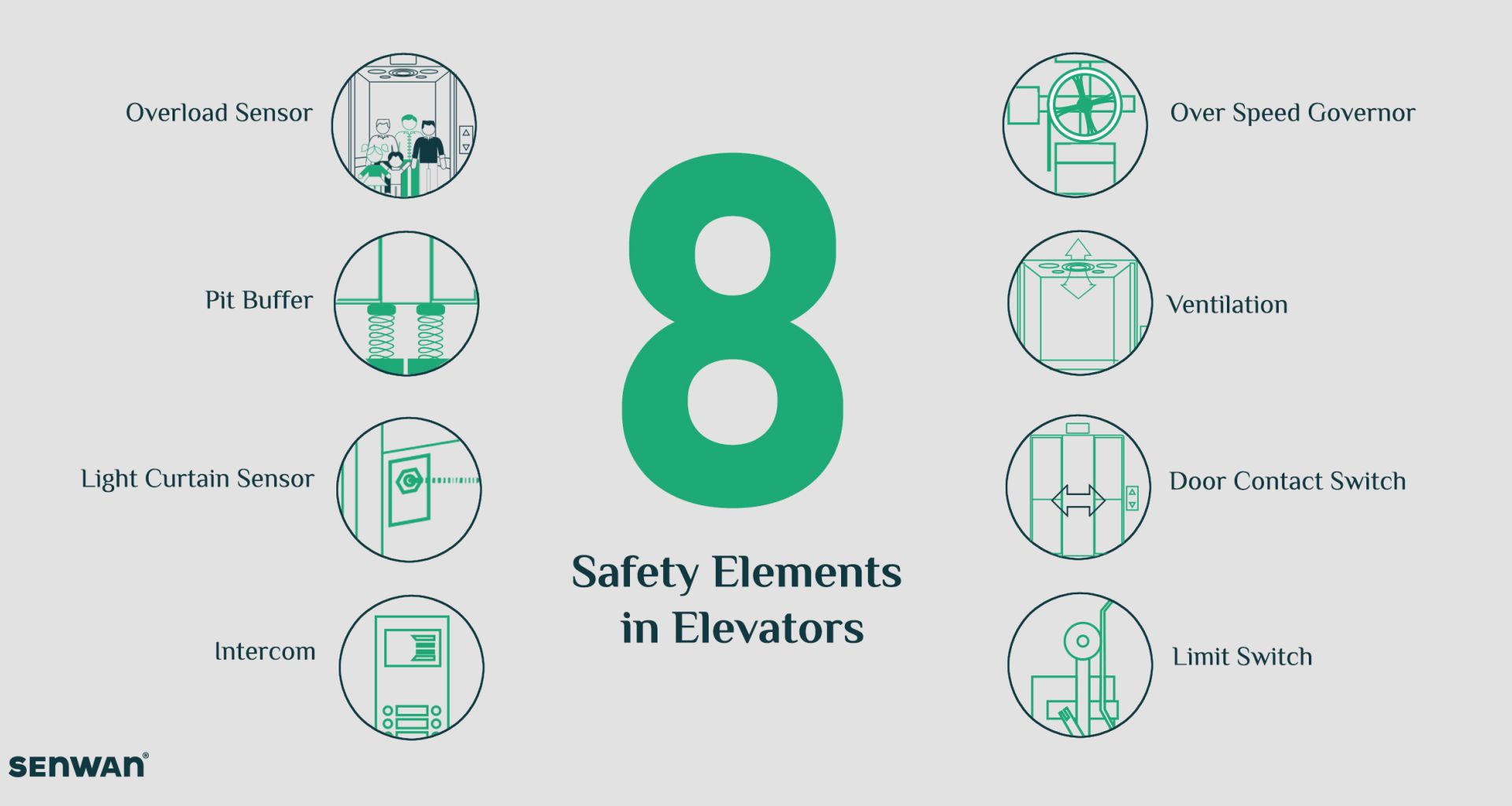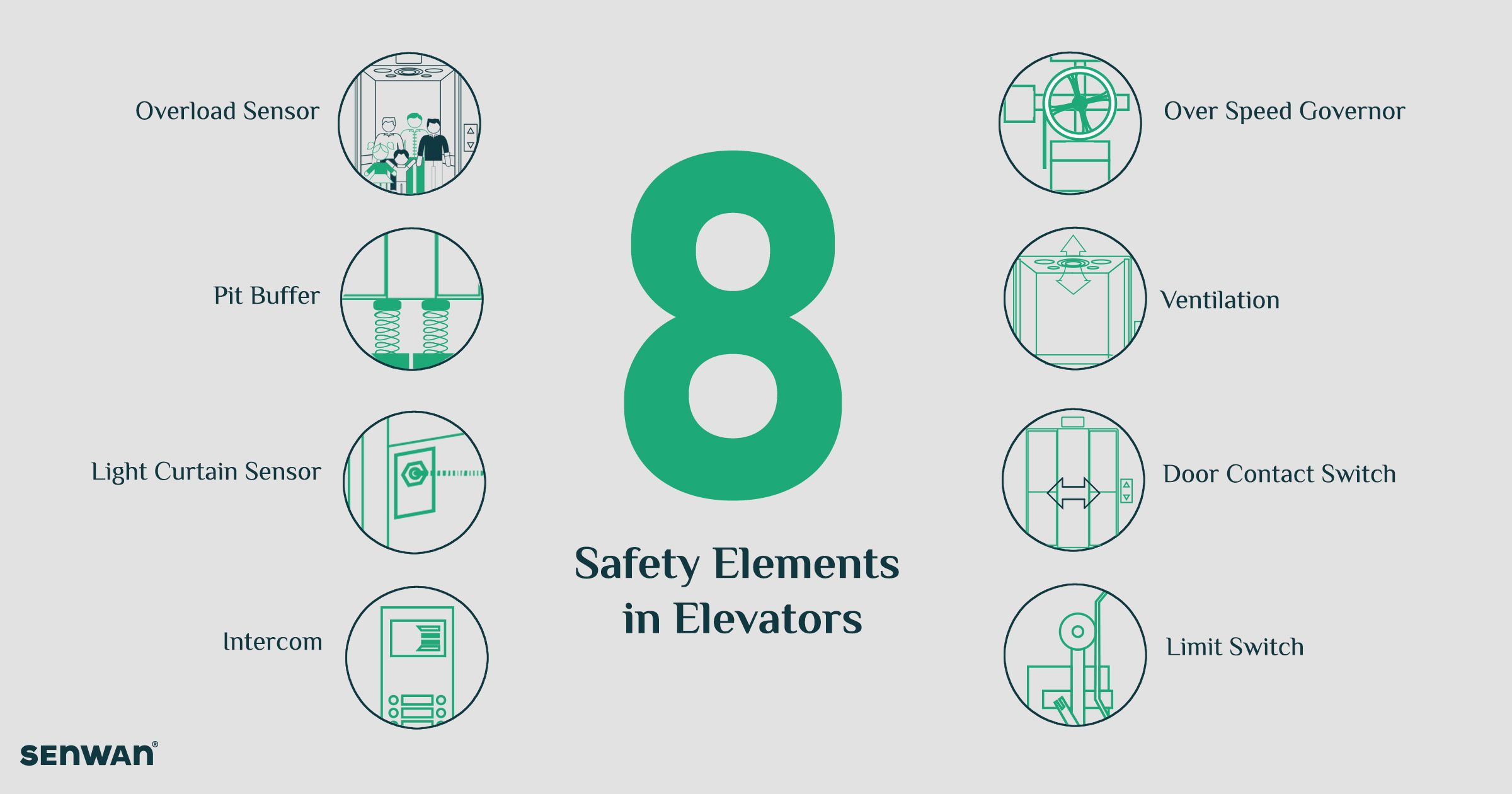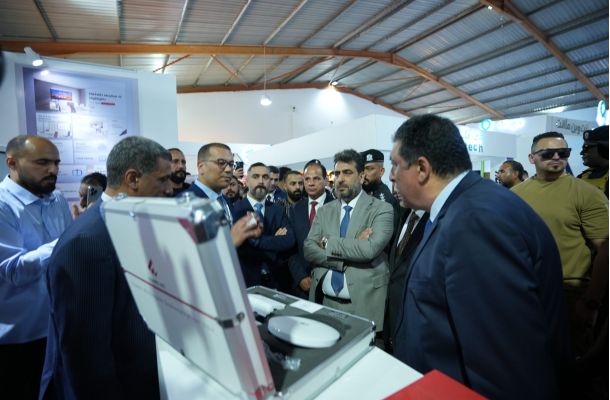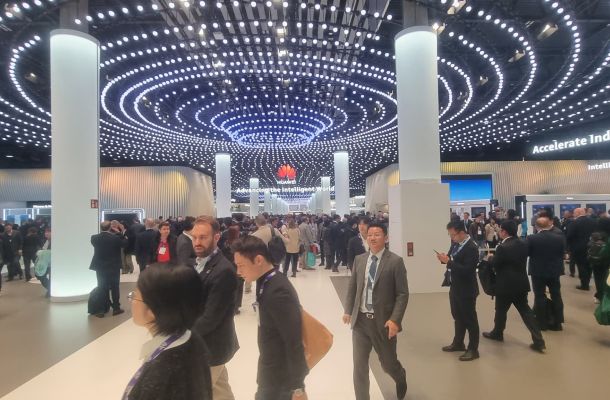8 Essential Safety Features that Make Elevators Incredibly Safe
8 Essential Safety Features that Make Elevators Incredibly Safe
Elevators have become an essential part of modern-day buildings, allowing us to reach upper floors within seconds and efficiently moving large numbers of people at the same time. However, despite the convenience they provide, some people are afraid of using elevators due to concerns about their safety. This fear raises the question of whether elevators are safe or not. The answer is that elevators are very safe, thanks to the strict safety codes and regulations they adhere to and the numerous safety features incorporated into their design.
To ensure passenger safety, modern elevators are equipped with various safety features that help prevent accidents and eliminate the risk of free-falling. These features include:
- Overspeed Governor: The Overspeed governor, also known as the speed limiter, is one of the most crucial safety mechanisms in elevators. It measures and regulates the speed of the elevator and is connected to the cabin via a steel cable. If the elevator exceeds its rated speed (usually higher than 10% of the maximum rated speed), the Overspeed governor cuts power to the motor, which slows down the motor shaft. If the elevator car continues to increase in speed, or all ropes are cut, and the cabin enters free fall, a tripping assembly is triggered by the flyweights. The tripping assembly actuates a mechanism to stop the governor rope, causing the safeties to engage and stop the car.
- Overload Sensor: Every elevator has a rated weight capacity that it must not exceed to ensure the safety of the passengers and the elevator’s longevity. Overload sensors are installed to ensure that the elevator does not carry more than its rated capacity. These sensors measure the weight of all the passengers on board, and if the weight exceeds the limit, an alarm is triggered, and the elevator will not operate until the load is decreased.
- Photocell Sensors: These sensors are located between the cabin door and the landing doors and create a light curtain. When a passenger crosses the light curtain, the sensors send a signal to the doors to open. Photocell sensors help avoid the doors closing on passengers as they enter the elevator. These sensors are an extra safety feature because the door panels retract when faced with enough resistance.
- Door Lock Safety Switches: The switches ensure that the elevator will not move as long as one of its doors remains open or not fully closed. This safety feature ensures that the elevator does not travel until all passengers have entered or exited the cabin and that the doors are fully closed, avoiding any possible injuries in case the door was opened while the elevator is traveling.
- Ceiling Fan: The Ceiling Fan provides ventilation to the cabin, renewing the air inside. While natural ventilation is required in all elevators, the fan acts as reassurance to panicked passengers when the elevator carries multiple passengers and there is a malfunction.
- Buffers: Buffers are safety devices located under the cabin and counterweight. These devices stop a descending car from going beyond its normal limit and soften and absorb the shock and force when the elevator free falls from a distance too small for the Overspeed governor to engage. Buffers help protect both the passengers and the elevator.
- Limit Switch:
This safety feature is responsible for ensuring that the elevator does not travel beyond the desired range. This helps prevent the possibility of the elevator crashing into the roof or floor or crashing into any mechanisms at the top or bottom of the shaft. The limit switch is also designed to protect any technicians performing maintenance on the elevator.
- UPS or ARD Devices:
When there is a power cut or failure during the elevator’s travel, these devices provide the elevator with enough electrical power to reach the closest floor and open the doors for the passengers to evacuate. These devices operate using batteries, so it’s essential to test them regularly and replace them when they are no longer operational.
While safety features are indeed important, the most important safety measure is proper conduct from the passengers. There are some guidelines to properly use elevators, and instructions to follow in case of stalled elevators. The most crucial guideline is to remain calm, contact emergency services, and wait to be rescued because inside the cabin is the safest part of the elevator. To ensure further passenger safety, it is recommended to make sure that the elevator is properly installed and maintained. Safety is a top priority for elevator manufacturers, and they follow strict safety policies to not endanger users and technicians. They offer top quality and modern elevators, as well as effective and detailed maintenance to improve the usage of safe elevators.
So, are safety features enough? The answer is that they play a vital role in ensuring elevator safety. Elevator manufacturers have made significant improvements to ensure that elevators are safe for users. The features mentioned above help prevent accidents and make elevators safer for everyone. However, proper usage and maintenance of elevators are equally important. Passengers should follow guidelines and remain calm in case of emergencies. Regular maintenance and inspection of elevators are necessary to prevent accidents and ensure that all safety features are functioning correctly. In conclusion, while safety features are important, it’s a joint responsibility between the manufacturer, maintenance team, and users to ensure that elevators are used safely.

Media gallery




